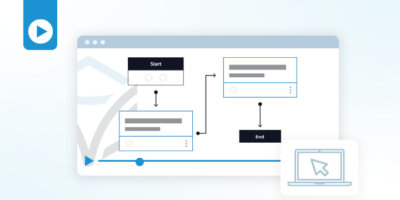Network automation has been gaining momentum and the rate of adoption has increased with most enterprise and service providers doing some form of task automation, such as writing scripts to automate a single activity such as a configuration changes or device backups. While this type of narrow-scope automation is worthwhile, it has only marginal benefit. Task automation provides modest increases in productivity at the individual engineer level but has minimal impact on the overall business because it fails to incorporate a broad enough set of activities to reduce overall effort and end-to-end process execution times.
As organizations attempt to expand their automation strategies to address the end-to-end process, they find it can entail a significantly larger investment of time and money. Before you get too far down the journey, consider an alternative approach to developing a network automation strategy that can ensure your investments focus on the full scope of automation, not just the tasks.
Defining Network Automation Use Cases
The first thing to consider when developing your network automation strategy is deciding which use cases to begin with. These can range and vary based on your business, but typically network automation use cases include:
- Device Deployment – Using tools to collect configuration variables and apply configuration to newly-deployed network devices, enabling them to communicate on the network.
- Device Provisioning – Using templates (such as Ansible) with configuration parameter files (written in languages such as YAML) to generate and deploy consistent configuration files.
- Device Version Management – Using tools to automate the distribution and implementation of new software versions, point releases, and security patches.
- Data Collection – Using open source tools to pull the run-time data from network devices, not just what your existing monitoring tools allow.
- Configuration Validation – Checking security compliance and automatically triggering remediation if there is a violation.
- Troubleshooting – Automating the analysis of fault and performance data to find root causes more quickly and reliably, resolve those issues that can be addressed via automation, and predict future issues.
Top-Down vs. Bottom-Up Approach: Which is Right for Your Organization?
Top-down and bottom-up are contrasting methods for designing systems for the management of people, networks, and countless other fields. The top-down approach starts with the big picture and then deconstructs it into finer elements. In contrast, a bottom-up approach starts with subsystems and bolts them together to form more complex systems.
A top-down approach will often lead to a better outcome than bottom-up, as it optimizes the overall solution to meet a global objective, rather than individual components, which only optimize at a local level.
Although network teams are steeped in engineering talent, when it comes to developing a network automation strategy, they often inadvertently end up taking a bottom-up approach. Network teams often start their engineering projects by selecting networking equipment; then add some management and automation systems on top (often from the equipment vendor); and then take those automated systems and look for ways to stitch them together.
Deferring the more important strategic decisions about an automation strategy can often come back to haunt automation projects, leading to compromises having to be made or projects simply getting bogged down in analysis paralysis. By taking a bottom-up componentized view, teams don’t understand what they’re automating until they have finished. As a result, teams may end up regretting decisions made earlier (at the instrumentation level) in a project because it ends up with suboptimal automation.
The Need for an Integrated Automation Platform
The top-down approach requires the ability to visualize and design automations and the capability to integrate across a diverse set of network technologies, IT systems, and CI/CD tools. While generic workflow tools exist, they lack the ability to quickly integrate with north and southbound systems, which are essential sources of information, and a domain-specific tool will understand industry-specific concepts.
As network automation evolves, it should not be tied to a specific application, controller, or orchestrator, but should become a platform that is deployed horizontally across the network, end-to-end. As this platform accesses multiple data sources, it can become a powerful agent of change, breaking traditional boundaries inside operators between networking and IT, and fostering collaboration. Initial efforts may target simple use cases such as software upgrades, device onboarding or firewall configuration changes. Once confident of the new approach, the platform can be expanded to encompass more complex use cases that leverage the same data sources.
Why Automate End-to-End
The benefits of end-to-end network automation are clear:
- Accelerate Operations
- Reduce Cycle Times
- Improve Productivity
- Reduce Errors
Automation reduces the time needed for deployments and configuration changes, so that organizations can be more responsive to customers and deliver services faster. Automation is also about reducing errors that impact customer experience.
The Itential Automation Platform was purpose-built to support end-to-end network automation and allow organizations to fully embrace a top-down approach with its easy to use, scalable and feature-rich network automation solution. Itential is a vendor agnostic solution that seamlessly connects disparate systems such as IT service management, inventory, analytics, and orchestration tools for end-to-end and closed-loop network automation capabilities.
To dive deeper into how to develop your end-to-end network automation strategy, download the full white paper.






